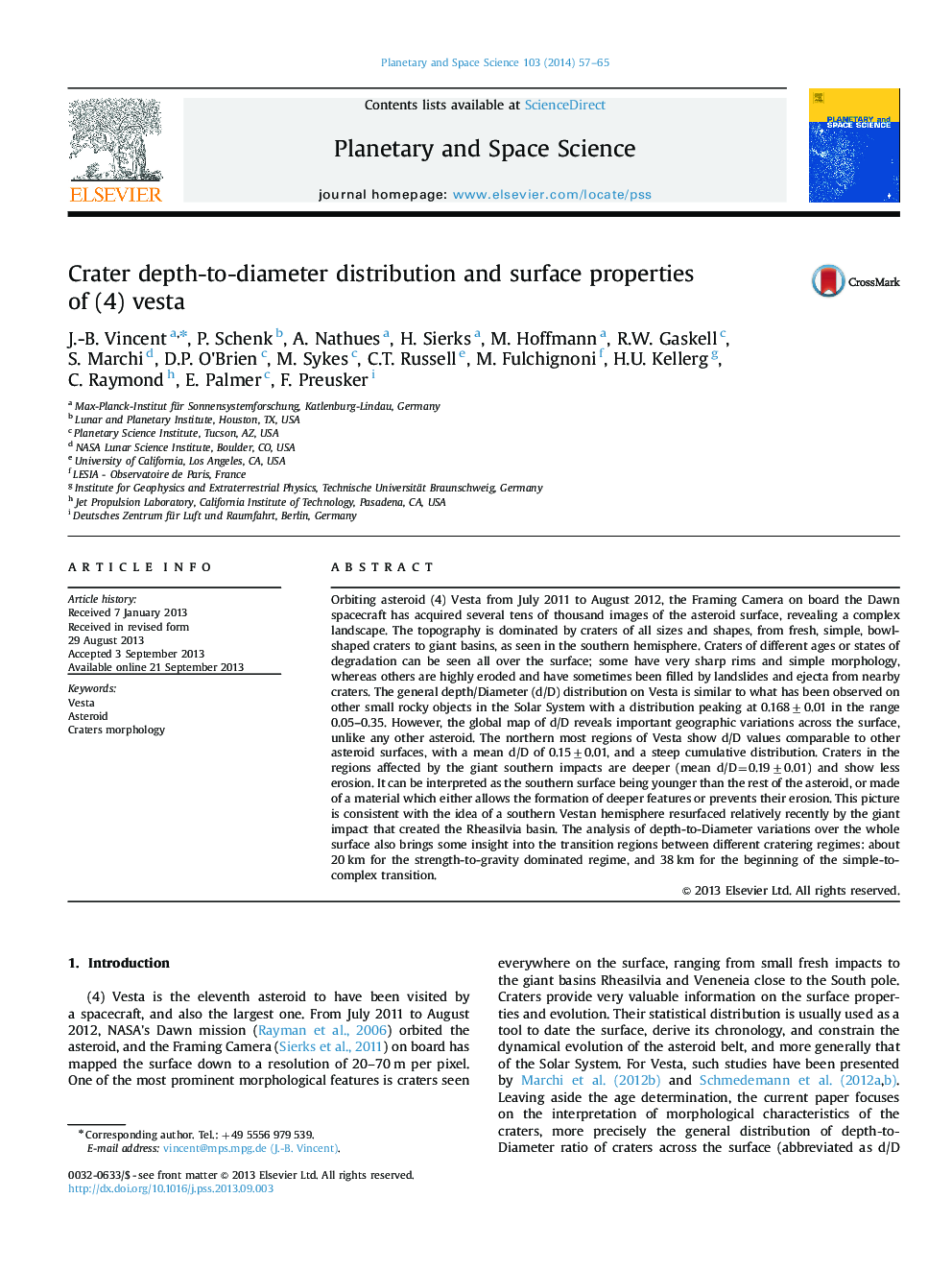| کد مقاله | کد نشریه | سال انتشار | مقاله انگلیسی | نسخه تمام متن |
|---|---|---|---|---|
| 8143420 | 1523934 | 2014 | 9 صفحه PDF | دانلود رایگان |
عنوان انگلیسی مقاله ISI
Crater depth-to-diameter distribution and surface properties of (4) vesta
دانلود مقاله + سفارش ترجمه
دانلود مقاله ISI انگلیسی
رایگان برای ایرانیان
کلمات کلیدی
موضوعات مرتبط
مهندسی و علوم پایه
علوم زمین و سیارات
فیزیک زمین (ژئو فیزیک)
پیش نمایش صفحه اول مقاله

چکیده انگلیسی
Orbiting asteroid (4) Vesta from July 2011 to August 2012, the Framing Camera on board the Dawn spacecraft has acquired several tens of thousand images of the asteroid surface, revealing a complex landscape. The topography is dominated by craters of all sizes and shapes, from fresh, simple, bowl-shaped craters to giant basins, as seen in the southern hemisphere. Craters of different ages or states of degradation can be seen all over the surface; some have very sharp rims and simple morphology, whereas others are highly eroded and have sometimes been filled by landslides and ejecta from nearby craters. The general depth/Diameter (d/D) distribution on Vesta is similar to what has been observed on other small rocky objects in the Solar System with a distribution peaking at 0.168±0.01 in the range 0.05-0.35. However, the global map of d/D reveals important geographic variations across the surface, unlike any other asteroid. The northern most regions of Vesta show d/D values comparable to other asteroid surfaces, with a mean d/D of 0.15±0.01, and a steep cumulative distribution. Craters in the regions affected by the giant southern impacts are deeper (mean d/D=0.19±0.01) and show less erosion. It can be interpreted as the southern surface being younger than the rest of the asteroid, or made of a material which either allows the formation of deeper features or prevents their erosion. This picture is consistent with the idea of a southern Vestan hemisphere resurfaced relatively recently by the giant impact that created the Rheasilvia basin. The analysis of depth-to-Diameter variations over the whole surface also brings some insight into the transition regions between different cratering regimes: about 20 km for the strength-to-gravity dominated regime, and 38 km for the beginning of the simple-to-complex transition.
ناشر
Database: Elsevier - ScienceDirect (ساینس دایرکت)
Journal: Planetary and Space Science - Volume 103, 15 November 2014, Pages 57-65
Journal: Planetary and Space Science - Volume 103, 15 November 2014, Pages 57-65
نویسندگان
J.-B. Vincent, P. Schenk, A. Nathues, H. Sierks, M. Hoffmann, R.W. Gaskell, S. Marchi, D.P. O'Brien, M. Sykes, C.T. Russell, M. Fulchignoni, H.U. Kellerg, C. Raymond, E. Palmer, F. Preusker,